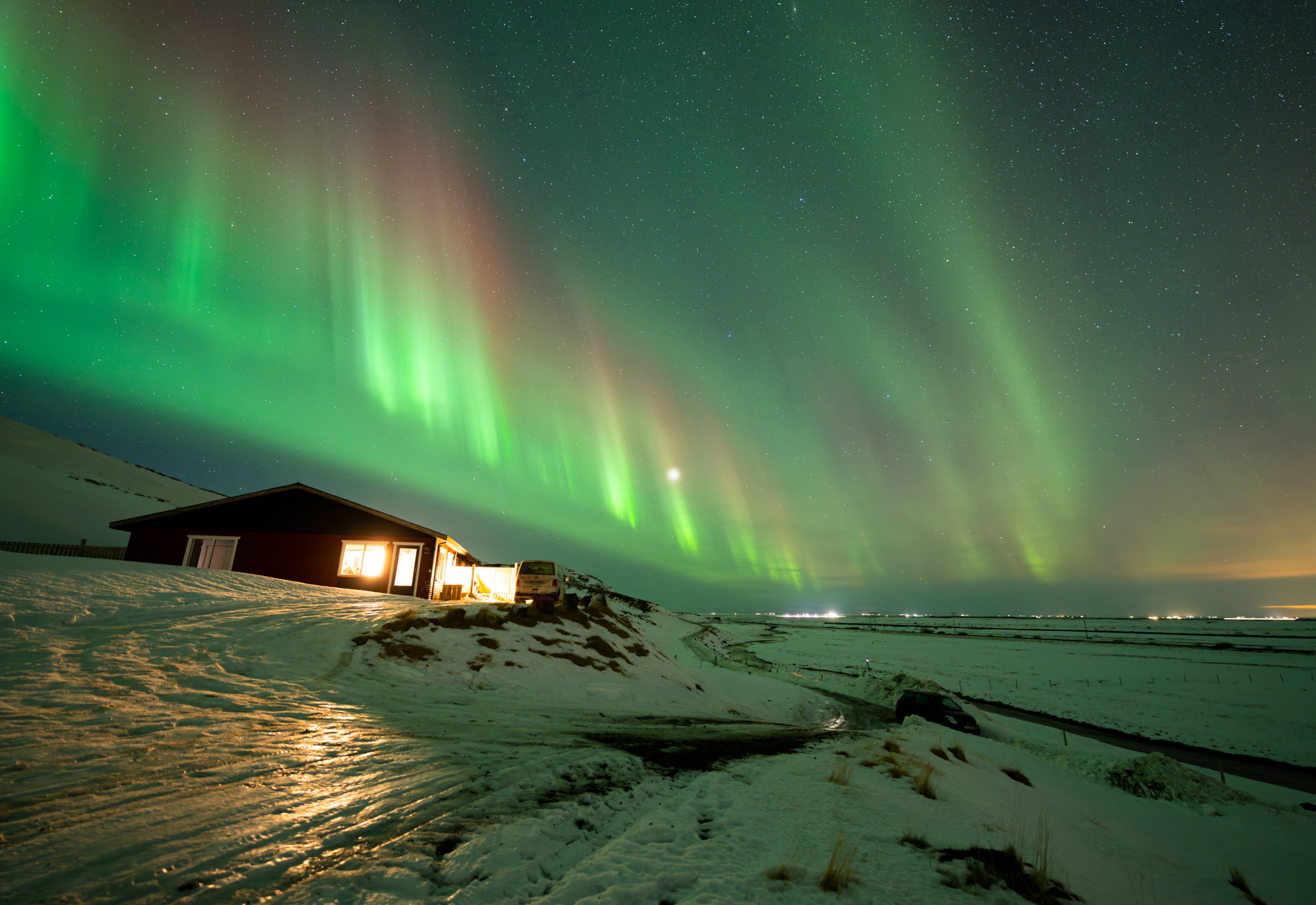Searching for answers about auroral beads
Rod Boyce
907-474-7185
Dec. 15, 2023
This week, scientists from the University of Alaska Fairbanks are presenting their work alongside thousands of colleagues from around the world at the 2023 American Geophysical Union fall meeting. Some of their discoveries are featured here. You can also find out more about UAF at AGU by searching for #UAFxAGU on social media platforms.

Auroral beads appear in the sky over Iceland.
The aurora remains full of secrets for scientists, and that’s certainly the case for graduate student researcher Vincent Ledvina.
Ledvina, a first-year Ph.D. student, has been studying a phenomenon known as “auroral beads.”
“Auroral beads are seen right before what are called auroral substorms. An auroral substorm is when the aurora gets really, really bright and dances around,” Ledvina said. “These beads are somehow tied to the formation mechanism of the substorm.”
Knowing more about the formation of auroral beads can help scientists learn more about the initiation of an auroral substorm. These high-energy
substorms send energized particles to Earth and can affect satellite orbits, communications systems and power grids. Knowing more about how substorms begin may benefit operators of those systems.
“Understanding how these daily events are initiated is therefore of great interest, and auroral beads may help provide the answer,” Ledvina said.
Ledvina compiled a lengthy list of about 300 auroral bead events from 15 years of data from a network of ground-based all-sky cameras associated with a NASA satellite mission that launched in 2007 to determine the physical processes that initiate auroras.
“I found these beads that had never been found before,” he said. “And now I’m looking at the properties of the beads. I’ve determined whether or not there was a substorm after the beads, and now the next step is to do the science on those events.”


